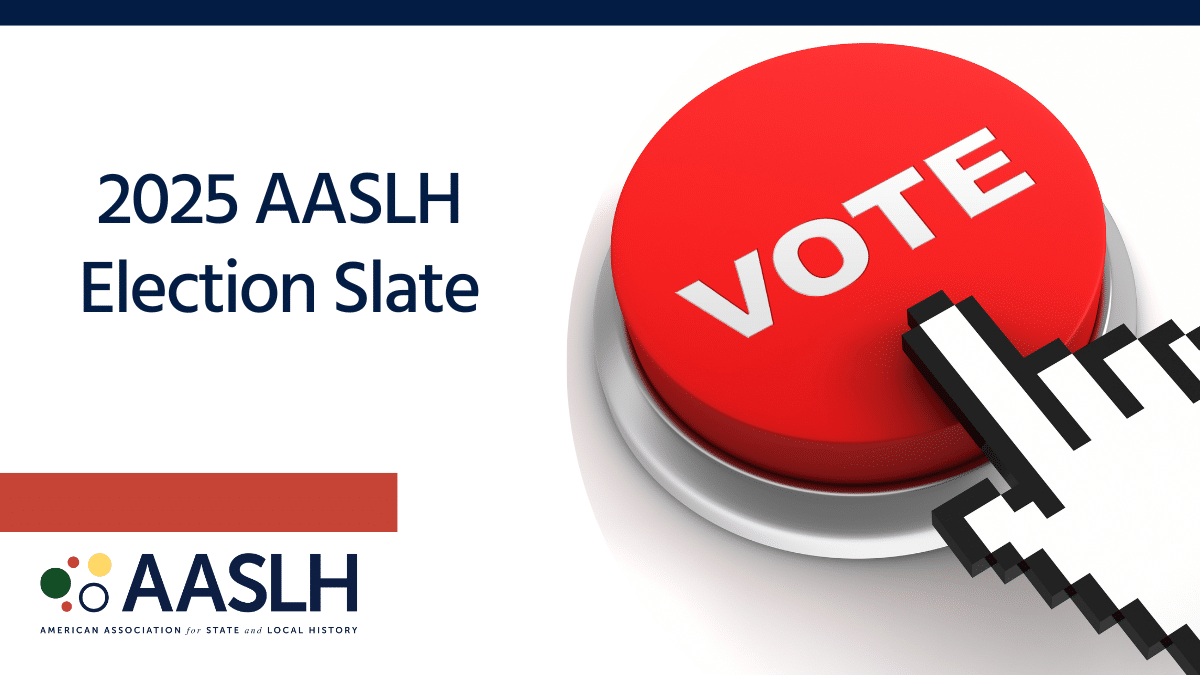“Sorry Dorothy… but here’s your pink slip. You’ve been useful for the last 38 years but your volunteer services are no longer needed.”
Okay, so it probably didn’t go down exactly like that, but when the Hirshhorn Museum (the Smithsonian museum focused on modern art) dissolved its volunteer docent program on very short notice late last summer, its 25 longtime volunteer docents were left with few opportunities for future engagement with the public. “[Our release] was done in a very rude, very uncouth way…It was disrespectful and insensitive,” said one docent of 12 years, who was quoted in the Washington Post.
So when I joined AASLH’s Educators & Interpreters Committee in December and learned about the Inkwell during the group’s first conference call, I knew this would be the topic of my first blog. Yes, it’s been bothering me that long – especially because it received DC-centric attention – but nary a mention in the larger museum world.
Any museum educator knows that volunteer programs require a lot of work – not only the hours put into recruiting, training, and acknowledging volunteer contributions, but those countless hours spent in “therapy” with them, whether they’re telling you about their latest surgery or a strange visitor encounter, or them providing you with needed advice on how to balance your workload and serving as a sounding board for ideas.
But let’s look beyond the fact that volunteer docents contribute untold hours (providing in kind-services valued near $40 per hour in Washington, DC!) and often serve as the friendly, first point of contact for visitors, especially at smaller museums. If a docent program becomes too unwieldy (whether it’s “outdated,” has too many persnickety individuals, or just doesn’t fit in the fancy strategic plan) as the Hirshhorn’s reasoning to the Post infers, perhaps the staff and the mission are the real problem.
It’s no secret that it takes a special person to run a volunteer program. Compassion, listening skills, quick thinking – they’re all part of the job description. And every museum has a point person responsible for volunteers, whether it’s a staff of two with 30 volunteers, or a staff of 500 with thousands of volunteers.
Turning to mission, then, what role do docents play? It should go without saying – especially since readers of this blog are mostly museum/history professionals – that they contribute thousands of dollars in in-kind services on a yearly basis, thus saving the organization funds that can be used for major operations, exhibitions, and programs. These in-kind services are not only crucial for grant applications that require matching funds, they prove a real asset when you recognize your volunteers (annually, I hope!) with their hours/years of service – why not include their “financial” contributions to the organization as well? Being able to state that a docent corps contributed the value of two full-time employees, for example, really makes a statement.
From an educator’s standpoint, I have to address the real elephant in the room: the value of a docent program to the volunteers themselves. In my new role at the Museum of Indian Arts and Culture, I am responsible for both the docent program and public adult programming. And I have personally placed these under the umbrella of “Adult Education” because they both enrich adult populations, albeit in different ways. While our public programs may draw a few hundred people for an hour or two of demonstrations or performances, our two dozen docents have spent hundreds of hours in what I consider “continuing adult education.” You’d be hard pressed to find a more dedicated, educated, passionate group of volunteers than those we have here at MIAC (except at your museum, right?), and there’s no way we could do it without them – especially when the hordes of elementary students descend in mid-fall and late spring – but we can’t forget about what the docents, themselves, are learning from our collections, publications, research, and programming. Since people are living longer and seeking opportunities to both volunteer and learn in the process, viewing a docent program as an adult education endeavor, in and of itself, is worth pondering.
At a time when the pendulum has swung back toward stressing quality of programming over number of attendees, a comprehensive docent program is arguably the most enriching opportunity museums can offer our aging population. How can one put a price tag on that?
Andy Albertson is new to AASLH’s Educators & Interpreters Committee, as well as his position as Adult Education Manager at the State of New Mexico’s Museum of Indian Arts and Culture. With more than a decade of museum education practice under his belt,
Andy continues to perfect the art of balancing paperwork and human priorities at work… Incidentally, he spent 3.75 hours talking with docents who dropped in during the writing of this post.




